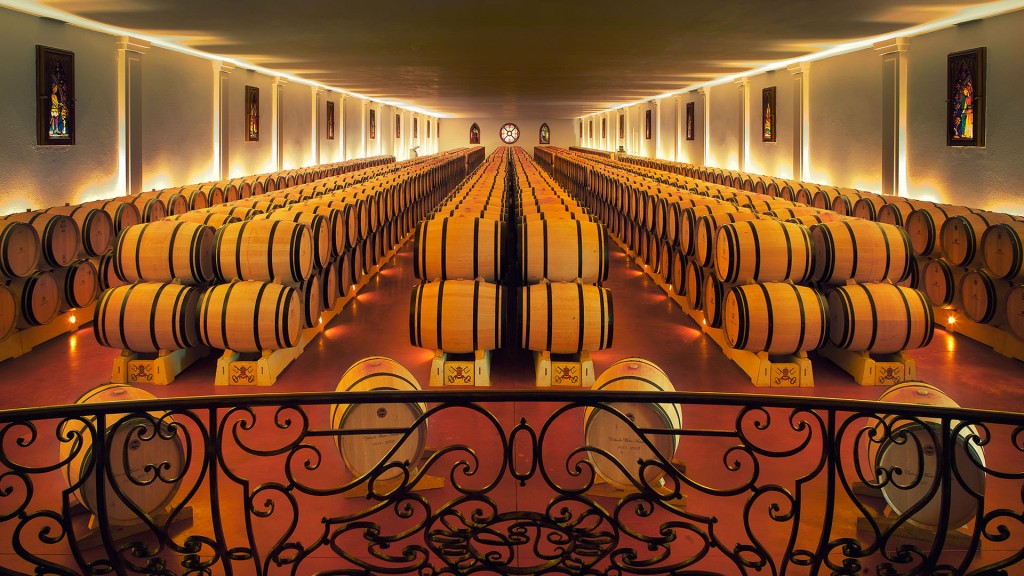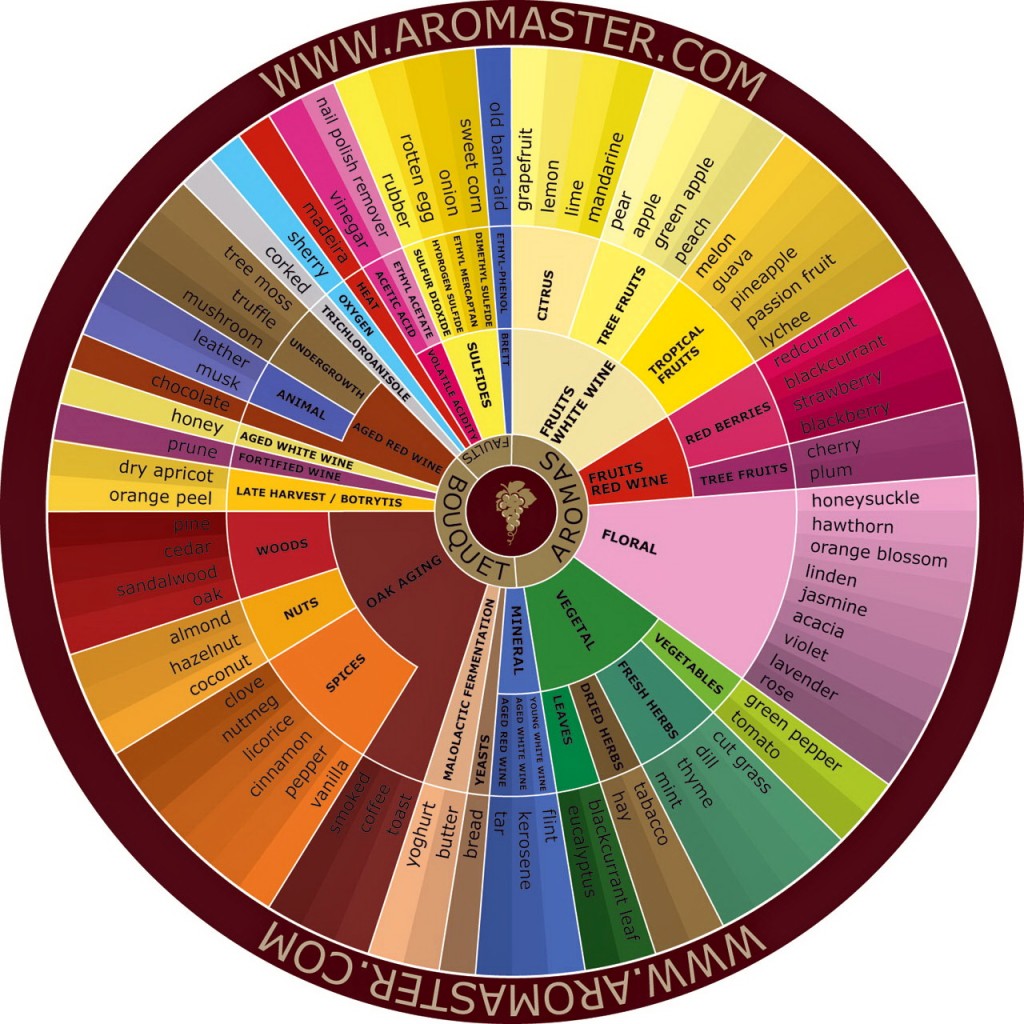March 2016 Update016 updatexxxxxx
The Quest for Perfection
‘Kim, the world wine industry is soooooo full of bull-shit and false direction that I sometimes think I need out, to sell off my wines and go vegetarian just to escape, to regain perspective. Honestly, I’m sick and tired of the bull-shit journalists, the pretension, the hustling, the egos, the point scoring, the investment portfolios. Can you tell me what I can do to regain my lost respect, my lost interest, even my sanity? I want imperfection. A little bret. A wine that says ‘up yours’ Mr journalist … Mr connoisseur … just drink me with a piece of good cheese.’ Jeffrey D, Best Wines Under $20 subscriber.
The Aroma Wheel: Juniper berries and Tea Leaves
Jeffrey hit the nail on the head. All that bull made me turn my back on fine wine in the late nineties, the pretentious restaurants springing up with their fancy sommeliers and eye-watering prices. Reviewers waxing lyrical about wines as if they were fashioned by angels, writing poetry instead of simple wine reviews.
At a Kemenys-Penfolds lunch at the Quay Restaurant a while back, the MC talked us through the brackets of wine in front of us, describing the various aromas and flavours in great detail. A gentleman at my table said he couldn’t see many of the things the reviewers saw in these wines, from the blueberries and violets to the charcuterie and chocolate, and asked me if I did. I confided that I often had the same problem, and a relieved smile came over his face.
It’s about the wine poetry that reviewers spray over their readers like Grand Prix racing drivers spray champagne over their acolytes from the winners’ podium. Heres’ a recent example from Tyson Stelzer, describing a Penfolds red:
‘Its colour is monumentally deep, jet black with a narrow, vibrant purple rim. The palate slowly uncoils to reveal tremendous depth of succulent black plum, blackberry and liquorice, with a crunchy vibrancy and an air of violet perfume that hovers from start to finish, framed in delightfully poised tannins of commanding structure yet ultra-fine restraint.’
Philip White enjoys vinous pyrotechnics more than most wine writers, and here he lets loose on another Penny’s red: ‘Musk, moss, tussocks, lots of very deep green things, white mushrooms, the earth they grew in … prunes, juniper, soft dried apple, fudge … coffee, black tea leaves … slightly gingery oak … here’s a sombre, brooding Cabernet after the Medoc style. All those things are very well locked in and assimilated … it has that red summer dust, too, making it very Australian. Conserve, but not jam. Complex, not cheeky …’
‘Beautifully Packaged Wines with Superbly Exaggerated Stories’
Wine writers often complain that people aren’t adventurous, or willing to learn, but is it any wonder they turn their backs on this pretentious rubbish and run back to the comfort of their Kiwi savvies, their Gamekeepers and their McGuigan Merlots? Boring but safe choices that don’t generate reams of wine poetry clamouring for analysis by theatre critics or professors of literature.
At the luxury end of the business, on the other hand, buyers crave poetry that tells them how rare the wine is, how exceptional its qualities, and how no effort was spared in its making. In a recent issue of Gourmet Traveller Wine, Andrew Caillard’s piece Wine Speak struck a chord. Caillard talks about ‘a language that is developing to satisfy the expectations of luxury wine buyers and wine aficionados. We live in an age of beautifully packaged wines with superbly exaggerated stories and prices.’
The Luxury end of the Business
The sting is in the tail, as usual: ‘Yet so often these bottles are no better than a wine without a history or fancy tale.’ That is the message we’ve been pushing at BWU$20 since our inception. That’s the reason $20 wines regularly beat much more fancied labels at serious wine shows and wine comps, but that’s missing the point Andrew makes: the luxury goods market works by a different set of rules, which are all to do with building a formidable brand on a pedestal of exclusivity.
The best brands do the talking for you; they let others know that you’re a person of ample means and impeccable taste. Chanel, Rolex, Chateau Lafite, Penfolds Grange … Even people who know little about wine know that Grange is a special red, except for the ex-premier of NSW.
Scores have become Bankable Currency
It’s hardly surprising that bloated wine poetry and fancy prices are backed up by inflated scores. Caillard makes the point that scores have become a ‘bankable consumer currency,’ and you can see that in the ads for wine and their Halliday 95 point scores. Remember, it’s 95 out of 100 points, the score for an ‘outstanding’ wine by Halliday’s definition. The fact that we make many hundreds of these simply underscores what a brilliant wine producer Australia is.
The dead fly in that glass of wine is that our main man’s scores are misleading, as we show here and here: Halliday’s scores are consistently 3-5 points higher than those of the boys at the Winefront and those of Huon Hooke (our most trusted reviewers). So what does a 95 point score from the Wine Companion team really mean? 92? 90? Big difference. When is the last time you saw a score of 89 points from Halliday? It’s a decent score at Wine Spectator but in Australia it’s almost an insult.
‘Is it a conscious decision by some wine writers to give over-inflated scores?’ asks Tim Atkin MW. ‘In some cases I believe it is. Their peers may laugh at them, but why should they care? The people who make and sell wine will be eternally grateful, especially in the current economic climate, when expensive wine is difficult to shift. Consumers want guidance, which is why high scores sell bottles. It’s only a guess, but I think we are going to see a lot more 100 pointers in the future. Whether the wines truly deserve it is another matter.’
As usual, it’s the money driving this trend. Wine merchants and wine companies love Halliday and pay happily for the use of his reviews and scores in their advertising. Why? Because the exaggerated scores make it easier to shift wine. Consumers are the losers in this game but most of them don’t know that; they think Halliday must know what he’s doing.
100 points is not enough
Caillard talks about the ‘bracket creep upwards’ that has distorted the market and ‘disenfranchised producers who make magical wine yet do not quite fit in the complicated hierarchies, bust lines and aristocracies of the fine wine genre.’ It’s a good shot at wine poetry’s goal but ‘bracket creep’ is a misnomer. Brackets don’t creep, nor do the scores inside them – it’s reviewers who push the scores up.
At least our GOM of Wine James Halliday has steered clear of 100 point scores. Not so Robert Parker who gave half a dozen Bordeaux reds from 2010 perfect scores last year, and set a new record when he re-scored the cream of the 2009 vintage and gave 18 wines 100 points, and another 11 99 or 99+points. So enamoured with 100 point scores is Parker that he’s launched a new lifestyle magazine for ‘high net-worth individuals and corporate leaders’ called 100 Points by Robert Parker
 Source: Bob McClenahan/Napa Valley Vintners
Source: Bob McClenahan/Napa Valley Vintners
‘For most critics,’ writes Andrew Jefford in Decanter, ‘perfection is a summit — an Everest or a K2: something you may dream about, but rarely if ever encounter.’ Amen. I’m not sure how the dishevelled hobo look gels with his exclusive target market but, when you’re as almighty as Parker, you can get away with anything I suspect.
Jefford quotes a colleague who said they’d soon be writing songs about Parker in the foothills of Pauillac, and why wouldn’t they? By tossing 100 point scores around like confetti at a wedding, Parker has made the vignerons of Bordeaux a lot richer than they already are. They love him for the same reason Aussie winemakers love Halliday: his reviews rarely lack enthusiasm and his scores always show uncommon generosity.
Perfection is Boring
The only people who’re not enamoured with inflated scores are more savvy types like our subscribers who’ve written in saying they’d stopped paying attention to Halliday long ago. We can’t do that, but we can compare his scores and normalise them. For most of us, perfect scores are not what wine is about as subscriber Jeffrey states at the top of this post. Wine is about character, and character is always flawed.
Strong characters are memorable, and that goes for literature, art, food and wine, from Beethoven and Captain Ahab to Brett Whiteley and Max Schubert, Murray Tyrrell and Rocky O’Callahan. Perfection is bland and boring. Give us wines that stand out for what they say, not for what others say about them. Give us wines we can remember and recognize the next time we meet them. To hell with perfection, let’s raise a glass to all those winemakers who make the wines they want to make, not the wines the experts want them to make.
Let’s finish on a high note here, with Matthew Jukes’ pushing the envelope of wine reviews hard: ‘In 2012 this is a wine that has thrown away its corset in favour of a more natural feel. The fruit is pliable, curvy, tender and heaving with yearning. It seems like its starlet days are long gone and this eager wine has blossomed into a full blown A-list heroine. You will never forget this flavour – it is a fulcrum moment for Vasse Felix.’ MORE
Kim
One more thing: the Aroma Wheel – all the ingredients for fine wine poetry



